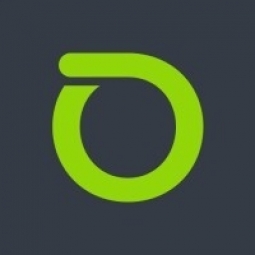Service Assurance Improves Online Mortgage Broker’s Revenue Opportunities, Costs and Quality Services

Customer Company Size
Large Corporate
Region
- America
Country
- United States
Product
- nGeniusONE® Service Assurance platform
- InfiniStream® appliances
Tech Stack
- Unified Communications (UC)
- SIP trunking service
Implementation Scale
- Enterprise-wide Deployment
Impact Metrics
- Cost Savings
- Revenue Growth
- Customer Satisfaction
Technology Category
- Application Infrastructure & Middleware - API Integration & Management
Applicable Industries
- Finance & Insurance
Applicable Functions
- Sales & Marketing
- Business Operation
Use Cases
- Predictive Quality Analytics
Services
- System Integration
- Testing & Certification
About The Customer
The customer is a U.S.-based online mortgage broker. It is one of the largest retail lenders in the country and offers several other real-estate services like title insurance, property valuations, closing services, other FHA-backed mortgage programs, and a network of real estate agents. With tens of thousands of employees and billions of dollars in mortgage volume, interpersonal communications is one of the most important services to the success of this company. As an online business, this mortgage broker depends on its communication systems to generate revenue for the company. The quality of calls and reliability of applications directly impact the user experience, which in turn impacts the bottom line.
The Challenge
The U.S.-based online mortgage broker embarked on a major Unified Communications (UC) project by migrating to a SIP trunking service. This upgrade was expected to save as much as $100,000 per month, while at the same time improving revenue opportunities by enabling outbound dialers to generate 16 times the number of calls with potential mortgage and refinance customers. However, following the implementation of the UC system, quality-of-service (QoS) issues, echo problems, switch issues resulting in dialing problems, and DNS/HTTP errors within the voice mail web app created a poor user experience. This jeopardized the success of the project and potentially harmed the business. IT faced the difficult challenge of proactively pinpointing the source of the problems, in order to rapidly triage and resolve them.
The Solution
To address the company’s pressing UC challenges, IT turned to NETSCOUT’s best-of-breed solutions. The nGeniusONE Service Assurance platform with Adaptive Service Intelligence™ (ASI) technology, along with several InfiniStream appliances, provide visibility into the strategic SIP Trunk initiative. The InfiniStream appliances are supporting 10GbE deployments in data centers where the automated dialers are initiating the calls to potential customers. The InfiniStream platform proactively collects, organizes and analyzes traffic data to provide rich information about the performance of business services and unified communications. Armed with this data, IT is able to quickly determine the root cause of problems and achieve seamless service assurance.
Operational Impact
Quantitative Benefit

Case Study missing?
Start adding your own!
Register with your work email and create a new case study profile for your business.
Related Case Studies.

Case Study
Real-time In-vehicle Monitoring
The telematic solution provides this vital premium-adjusting information. The solution also helps detect and deter vehicle or trailer theft – as soon as a theft occurs, monitoring personnel can alert the appropriate authorities, providing an exact location.“With more and more insurance companies and major fleet operators interested in monitoring driver behaviour on the grounds of road safety, efficient logistics and costs, the market for this type of device and associated e-business services is growing rapidly within Italy and the rest of Europe,” says Franco.“The insurance companies are especially interested in the pay-per-use and pay-as-you-drive applications while other organisations employ the technology for road user charging.”“One million vehicles in Italy currently carry such devices and forecasts indicate that the European market will increase tenfold by 2014.However, for our technology to work effectively, we needed a highly reliable wireless data network to carry the information between the vehicles and monitoring stations.”

Case Study
Safety First with Folksam
The competitiveness of the car insurance market is driving UBI growth as a means for insurance companies to differentiate their customer propositions as well as improving operational efficiency. An insurance model - usage-based insurance ("UBI") - offers possibilities for insurers to do more efficient market segmentation and accurate risk assessment and pricing. Insurers require an IoT solution for the purpose of data collection and performance analysis

Case Study
Smooth Transition to Energy Savings
The building was equipped with four end-of-life Trane water cooled chillers, located in the basement. Johnson Controls installed four York water cooled centrifugal chillers with unit mounted variable speed drives and a total installed cooling capacity of 6,8 MW. Each chiller has a capacity of 1,6 MW (variable to 1.9MW depending upon condenser water temperatures). Johnson Controls needed to design the equipment in such way that it would fit the dimensional constraints of the existing plant area and plant access route but also the specific performance requirements of the client. Morgan Stanley required the chiller plant to match the building load profile, turn down to match the low load requirement when needed and provide an improvement in the Energy Efficiency Ratio across the entire operating range. Other requirements were a reduction in the chiller noise level to improve the working environment in the plant room and a wide operating envelope coupled with intelligent controls to allow possible variation in both flow rate and temperature. The latter was needed to leverage increased capacity from a reduced number of machines during the different installation phases and allow future enhancement to a variable primary flow system.

Case Study
Automated Pallet Labeling Solution for SPR Packaging
SPR Packaging, an American supplier of packaging solutions, was in search of an automated pallet labeling solution that could meet their immediate and future needs. They aimed to equip their lines with automatic printer applicators, but also required a solution that could interface with their accounting software. The challenge was to find a system that could read a 2D code on pallets at the stretch wrapper, track the pallet, and flag any pallets with unread barcodes for inspection. The pallets could be single or double stacked, and the system needed to be able to differentiate between the two. SPR Packaging sought a system integrator with extensive experience in advanced printing and tracking solutions to provide a complete traceability system.

Case Study
Transforming insurance pricing while improving driver safety
The Internet of Things (IoT) is revolutionizing the car insurance industry on a scale not seen since the introduction of the car itself. For decades, premiums have been calculated using proxy-based risk assessment models and historical data. Today, a growing number of innovative companies such as Quebec-based Industrielle Alliance are moving to usage-based insurance (UBI) models, driven by the advancement of telematics technologies and smart tracking devices.
Case Study
Enhancing Security and Compliance in Remitly's Global Money Transfer Service with Fastly
Remitly, an online remittance service, was faced with the challenge of securing its proprietary global transfer network. The company needed a security solution that could meet PCI requirements and protect customers' sensitive transactions through its mobile application. The solution had to be capable of defending against new and emerging attack types without impacting performance. Remitly also had to deal with irregular traffic patterns, such as a sudden spike in account transfers from a small network segment on the Pacific coastline of South America. The company needed to determine in real time whether such traffic indicated an attack or valid requests. A traditional web application firewall (WAF) would not be able to distinguish this traffic, potentially leading to customer frustration if the IP was blacklisted.






